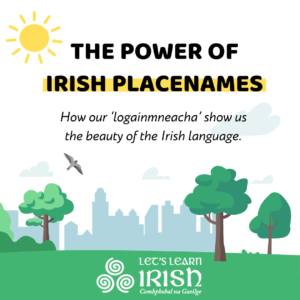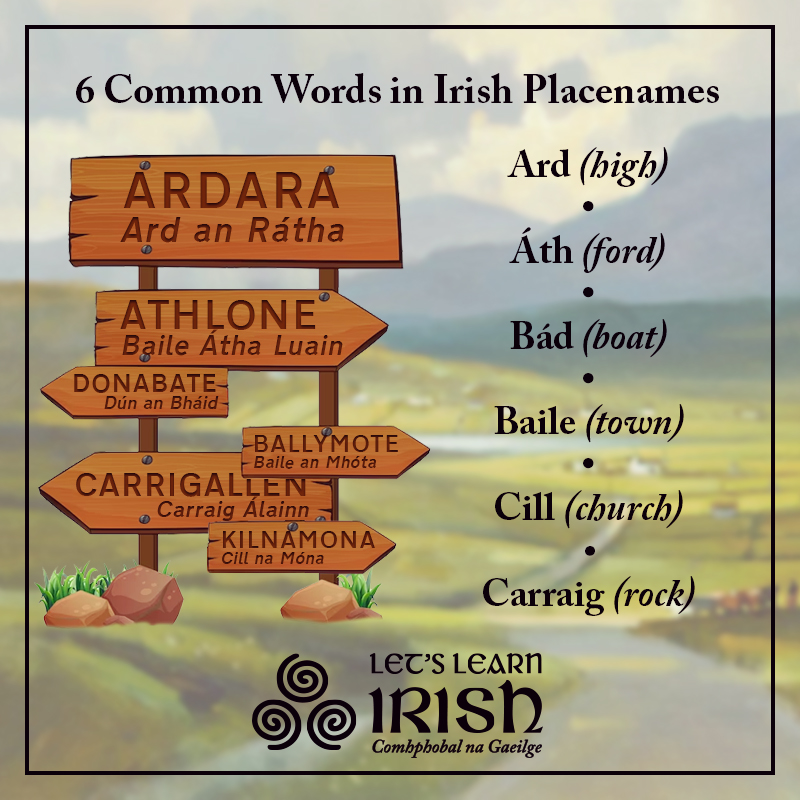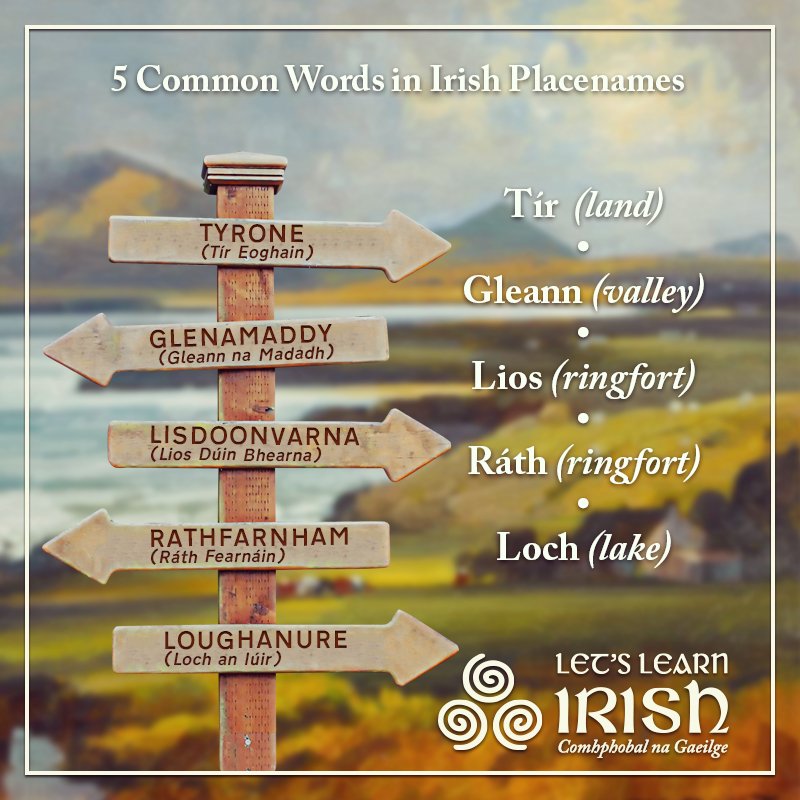The Power of Irish Placenames
Do we truly appreciate the power of Irish placenames? Although we can focus so much on the effects of colonization and the reasons for our disconnect with our native language, there are indeed many reasons why we should begin to rebuild, rekindle our relationship to Irish. A wonderful way to reconnect with Irish is through our local placenames, because our ‘logainmneacha’ can show us the beauty of the language all around us.
Historical Richness
 There is such historical richness within the Irish language, but our stories and wisdom can be easily lost over time, and this can be seen especially with placenames throughout this country. Perhaps this is a bit of a stretch, but I think we could compare our placenames with that of the song lines of Aboriginals in Australia. The aboriginals have what they call ‘songlines’, and these songlines are passed from elder to elder over thousands of years. Songlines trace astronomy and geographical elements from ancient stories, and describe how these things have helped shape the landscape as it is now. They were first used by First Nations people as a form of communication across the continent and a way of mapping the country. Now without these stories and songs, the initiated would have no way to map their way across the physical terrain, understand their place in the cosmos or remember the stories of their ancestors. I think we can compare this to our own placenames across Ireland.
There is such historical richness within the Irish language, but our stories and wisdom can be easily lost over time, and this can be seen especially with placenames throughout this country. Perhaps this is a bit of a stretch, but I think we could compare our placenames with that of the song lines of Aboriginals in Australia. The aboriginals have what they call ‘songlines’, and these songlines are passed from elder to elder over thousands of years. Songlines trace astronomy and geographical elements from ancient stories, and describe how these things have helped shape the landscape as it is now. They were first used by First Nations people as a form of communication across the continent and a way of mapping the country. Now without these stories and songs, the initiated would have no way to map their way across the physical terrain, understand their place in the cosmos or remember the stories of their ancestors. I think we can compare this to our own placenames across Ireland.
A Story Behind Each Name
If we were to completely stop speaking Irish tomorrow, we would lose so much of our history and stories that can easily be seen in our local environment. There is almost always a story behind each name as Gaeilge in Ireland. Here are some examples that I’ve found:
– There is a place near me called Boherboy in Wicklow. On the surface, this name has no meaning, but when you see the Irish translation of it, it makes more sense: ‘An Bóthar Buí’ literally means ‘The Yellow Road’. Perhaps butter was carried along this road in times past.
– Muckanaghederdauhaulia, Co. Galway is the longest place name in Ireland! It’s a small village in the Connemara Gaeltacht, located between Camus and An Ceathrú Rua. In Irish, this is Muiceanach idir Dhá Sháile – which literally means ‘pig-shaped hill between two seas’. In English, the name is complete nonsense, but in Irish it is literally describing the place!
– Just south of Adare village in Limerick is Knockfeerina, which was Cnoc Dhoinn Fírinne (Donn’s Hill of Truth). On further inspection, this hill was the power centre of Donn, brother of Amergin, the druid whose incantation propelled our world into being. It is said Donn drowned with the rest of Amergin’s family, but was later resurrected as King of the Munster Faeries. He chose Knockfeerina for the site of his palace, and he’s buried there under a massive rock cairn at the summit. The Irish word ‘fírinne’ means ’truth’.
 – Where I live in Stratford, in Co. Wicklow, the river Slaney runs through it, which makes me wonder where did ‘Slaney’ originate. However, as Gaeilge, it translates as ‘Abhainn na Sláine’, meaning ‘River of Health’.
– Where I live in Stratford, in Co. Wicklow, the river Slaney runs through it, which makes me wonder where did ‘Slaney’ originate. However, as Gaeilge, it translates as ‘Abhainn na Sláine’, meaning ‘River of Health’.
My point here is to highlight the deep history and stories intertwined within our placenames and that more importantly, if we lose the Irish origins of our names, then we lose so much more than just the name. We lose our stories, our knowledge and wisdom of the land itself. Therefore, the most direct and visceral way the Irish language is connected to landscape is through placenames. As the saying goes, “There’s stories in them hills!” For more reading, be sure to read our previous articles on Irish placenames, where we explore commonly used words in townlands, villages, towns and cities!
Join the online Irish community for cúrsaí, comhrá & ceardlanna, and follow along on social media @LetsLearnIrish – beidh fáilte romhat!





